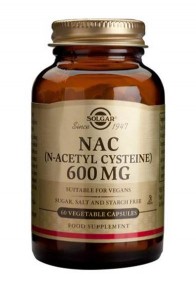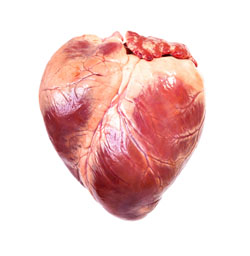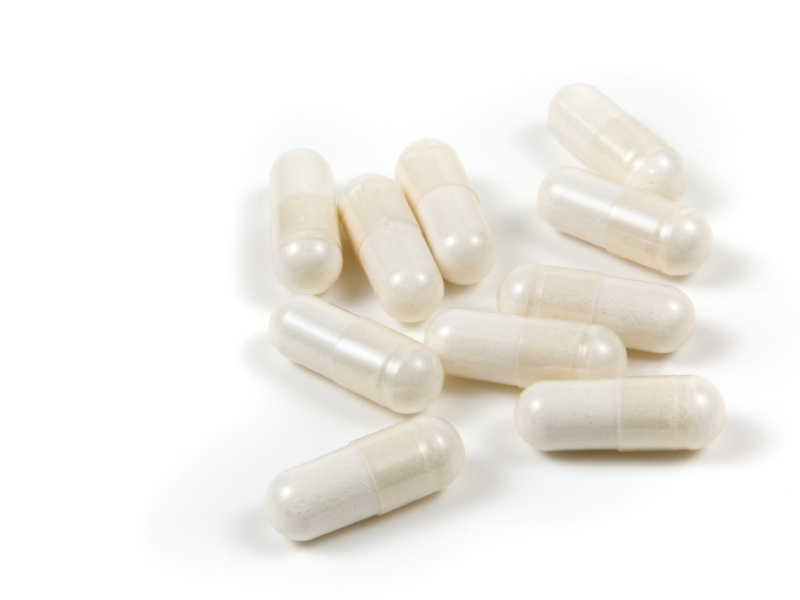Lurasidone Effective Long-Term in Pediatric Bipolar Depression

At the 2020 meeting of the American Society of Clinical Psychopharmacology, researcher Manpreet Singh presented data showing that children aged 10–17 with bipolar depression had an excellent long-term response to the antipsychotic medication lurasidone (trade name Latuda).
Lurasidone has been approved by the US Food and Drug Administration as a monotherapy treatment of bipolar depression in children and adolescents since 2018. Following a six-week double-blind study comparing lurasidone with placebo in 305 children and adolescents, Singh and colleagues carried out an open-label extension study in which all of the young participants, including those in the placebo group, had the option of taking lurasidone for up to two more years.
Of those, 195 children completed one year of treatment, and 93 completed two years of treatment. Rates of response were 51.0% after the six-week preliminary study; 88.4% at one year; and 91.1% at two years. Rates of remission were 24.3% after the six-week study; 61.3% at one year, and 75.6% at two years, while rates of recovery were 17.7% after the preliminary study; 53.8% at one year; and 73.8% at two years.
This improvement in depression had a strong correlation with improvement in functioning, as measured by the Children’s Global Assessment score (CGAS). The results show progressive increases in rates of response, remission, and recovery with duration of treatment that are associated with improvement in functioning.
In Phase 3 Clinical Trials, Antipsychotic Treatment Lumateperone Is Found Effective in Bipolar Depression
Lumateperone is an antipsychotic medication that is currently approved by the US Food and Drug Administration for the treatment of schizophrenia (under the trade name Caplyta). New studies suggest that the drug is also effective in bipolar I and bipolar II depression.
Lumateperone modulates the activity of the neurotransmitters dopamine, serotonin, and glutamate. It modulates D1 and D2 dopamine receptors, partially activating presynaptic receptors while partially blocking postsynaptic receptors. Lumateperone acts as an antagonist blocking serotonin 5-HT2A receptors, and it augments activity at both NMDA and AMPA glutamate receptors.
Because of lumateperone’s complex pharmacology, it is not clear which of these activities are primarily responsible for its antidepressant and antipsychotic activities.
New research presented at the 2020 meeting of the International Society for Bipolar Disorders showed that lumateperone reduces bipolar depression.
Researcher Susan Kozauer presented research from a six-week study of 377 patients who were randomized to receive treatment with either 42mg of lumateperone (n=188), taken once daily in the evening, or placebo (n=189). The patients had been diagnosed with bipolar I or II disorder and were experiencing an episode of major depression.
Patients taking lumateperone saw significantly greater improvement in depression than those in the placebo group. Among those taking lumateperone, 60% of those who were markedly ill or worse at baseline improved to mildly ill or better, compared to 43% of those taking placebo.
Researcher Suresh Durgam described improvements in specific symptoms that make up the Montgomery-Åsberg Depression Rating Scale (MADRS) in those patients who received lumateperone. The greatest improvements compared to placebo were in sadness, inner tension, and reduced sleep. By the 29th day of the study, 8 of 10 items on the scale had improved significantly compared to placebo, and all items had improved by day 43.
The side-effects profile of lumateperone was presented by researcher Lakshmi Yatham.
Among those taking lumateperone, 8.5% experienced sleepiness compared to 1.1% of those in the placebo group, while 6.4% of the lumateperone group experienced nausea compared to 2.1% of the placebo group. Most effects were mild or moderate in severity. Changes in weight, metabolic measures, extrapyramidal motor effects, and prolactin were minimal in both the lumateperone group and the placebo group.
Editor’s Note: Lumateperone (Caplyta) joins a list of other atypicals that are efficacious in bipolar depression. These include olanzapine-fluoxetine (Symbyax), quetiapine (Seroquel), lurasidone (Latuda), and cariprazine (Vraylar). Lumateperone is currently only FDA-approved for schizophrenia, but approval for bipolar depression should be rapidly forthcoming based on the data presented at the ISBD meeting.
Bipolar depression used to be an orphan diagnosis, with few efficacious treatments. This is now beginning to change, and treating patients with bipolar disorder using antidepressants designed to treat unipolar depression (for which there is little evidence of efficacy) should begin to recede.
Fish Oil Monotherapy on Depression in Adolescents at High Risk for Bipolar I Disorder: Ambiguity Persists

Researcher Robert K. McNamara and colleagues reported in the Journal of Child and Adolescent Psychopharmacology in a 2020 article that 12 weeks of treatment with omega-3 fatty acids in the form of fish oil did not reduce depression symptoms in adolescents at risk for bipolar disorder when compared to placebo. The primary outcome measured was the results of the Childhood Depression Rating Scale-Revised (CDRS-R).
Fish oil did perform better than placebo on two parts of the rating scale: symptom severity and symptom improvement, especially in weeks 11 and 12 of the study. Omega-3 fatty acids increased creatine and choline in the anterior cingulate, and also increased polyunsaturated fatty acids in red blood cells. The treatment was safe and well-tolerated.
A total of 42 patients between the ages of 9 and 21 who had been diagnosed with depression and had at least one parent with bipolar I disorder received either placebo or 3 fish oil capsules per day. Each capsule contained 450?mg EPA, 40?mg docosapentaenoic acid (DPA), and 260?mg DHA for a total daily dose of 2130?mg EPA + DHA.
Editor’s Note: Ambiguity persists about whether omega-3 fatty acids can improve unipolar or bipolar depression, attention-deficit hyperactivity disorder (ADHD), or prevent the progression of schizophrenia symptoms to the full syndrome. Given the lack of side effects, and the documented effects on red blood cells and brain choline, clinical use of these compounds could be considered in some circumstances.
Improvement in Bipolar Depression on Open-Label Lurasidone
Researcher Katherine Burdick and colleagues of Brigham and Women’s Faulkner Hospital and Harvard University reported in a poster at the 2019 meeting of the American Academy of Child and Adolescent Psychiatry (AACAP) that youth between the ages of 10 and 17 with bipolar depression who continued taking lurasidone on a non-blind basis following a double-blind placebo-controlled six-week trial of the drug, or those who began taking lurasidone (for those who had been in the placebo group during the trial) saw improvement over a period of one to two years. All of the patients began the extension portion of the study at a dose of 20 mg/day.
Lurasidone appeared to be effective and well-tolerated. In addition, Burdick and colleagues reported a lack of cognitive difficulties in the youth taking lurasidone. Interestingly, a measure of visual learning substantially and progressively improved over the course of the study.
Treating Bipolar Depression in an Adolescent
At the 2019 meeting of the International Society for Bipolar Disorders, researcher Ben Goldstein discussed a case of a 15-year-old with bipolar depression and his recommended treatments for the adolescent. Goldstein endorsed the use of an atypical antipsychotic such as lurasidone, and perhaps also quetiapine. Goldstein noted 2015 findings from researcher Robert Findling that lamotrigine was significantly more effective than placebo in adolescents 13–18 years old, but was not effective in those aged 10–12.
(In adults, researcher John Geddes and colleagues found that in patients with an inadequate antidepressant response to quetiapine, the addition of lamotrigine was more effective than adding a placebo, both acutely and in long-term follow-up. The only caveat was that lamotrigine was less effective in those who were also being treated with folate.)
Editor’s Note: Some other treatments could augment the effects of the regimen proposed by Goldstein, including lithium and the antioxidant N-acetylcysteine, which, it should be noted, takes more than eight weeks to become effective. Vitamin D3 could also be considered, as it is often low in children with psychiatric disorders. One treatment that went unmentioned at the meeting was repeated transcranial magnetic stimulation, or rTMS, which is effective and well-tolerated in adolescents with depression.
For patients with more rapidly cycling bipolar disorder and only partial response to medications, the combination of the ‘three Ls’ (lurasidone, lamotrigine, and lithium) could have considerable appeal, given that each drug is from a different class of medications, has a different mechanism of action, targets a different mood phase, and is relatively well-tolerated both alone and in combination with other drugs.
Newly Identified Effects of N-Acetylcysteine
 In a talk at the 2019 meeting of the International Society for Bipolar Disorders, researcher Michael Berk, who was responsible for some of the initial findings on the effects of the antioxidant N-acetylcysteine (NAC), summarized some of the newer findings about the treatment.
In a talk at the 2019 meeting of the International Society for Bipolar Disorders, researcher Michael Berk, who was responsible for some of the initial findings on the effects of the antioxidant N-acetylcysteine (NAC), summarized some of the newer findings about the treatment.
NAC has been found to be effective in bipolar depression and in the treatment of both positive and negative symptoms of schizophrenia. It also helps in the avoidance of cocaine, alcohol, tobacco, and marijuana. It can reduce habitual behaviors such as gambling, obsessive compulsive disorder (OCD), and trichotillomania (compulsive hair-pulling) and irritability and motor stereotypy (repeated movements) in autism.
A 2016 study by researcher Sudie E. Back and colleagues in the Journal of Clinical Psychiatry found that NAC improved symptoms of post-traumatic stress disorder (PTSD) in veterans who also had depression and substance use disorders at a dosage of 2.4 grams/day.
According to Berk, NAC also reduces the incidence of lithium-related renal failure and reduces mitochrondrial toxicity. One study reported that it improved working memory in patients with schizophrenia.
In his talk, Berk also noted that statins offer an interesting new avenue for treatment. Several studies have suggested statins can improve mood or reduce the likelihood of a depressive recurrence. Angiotension-active drugs (inhibitors) have also been reported to decrease the incidence of depression and to improve cognition.
Meta-Analysis Finds Omega-3 Fatty Acids Do Not Reduce Cardiovascular Disease Risk
 In a 2018 meta-analysis published in the journal JAMA Cardiology, researcher Theingi Aung and colleagues found that across 10 studies including a total of 77,197 participants, omega-3 fatty acid supplementation did not reduce risk of coronary heart disease in people at high risk. This newer finding conflicts with a 2017 advisory from the American Heart Association that suggested omega-3 fatty acid supplementation might prevent cardiovascular disease.
In a 2018 meta-analysis published in the journal JAMA Cardiology, researcher Theingi Aung and colleagues found that across 10 studies including a total of 77,197 participants, omega-3 fatty acid supplementation did not reduce risk of coronary heart disease in people at high risk. This newer finding conflicts with a 2017 advisory from the American Heart Association that suggested omega-3 fatty acid supplementation might prevent cardiovascular disease.
When it comes to mood disorders, it has been similarly difficult to pin down whether omega-3 fatty acids are helpful. Data on omega-3 fatty acid supplements for the prevention of depression have been ambiguous, with small numbers of studies and variations in study design that make it difficult to draw strong conclusions about whether these supplements can improve or prevent depression.
A 2016 systematic review by Paola Bozzatello and colleagues in the Journal of Clinical Psychiatry found only seven studies of omega-3 fatty acid supplementation in bipolar disorder. The studies had small sample sizes and widely varying dosage parameters, so the evidence that can be drawn from them is not strong, but the review did find a modest benefit on bipolar depression (but not mania) when omega-3 fatty acids were added to a treatment regimen, compared to treatment as usual.
The same review found that studies of omega-3 fatty acid supplementation in unipolar depression also varied widely, and thus it was difficult to draw inferences from them. Some meta-analyses found no benefit to omega-3 fatty acid supplementation, while others suggested that omega-3s could improve depression. The review found that the type of omega-3 fatty acids used might matter. Supplementation with EPA seemed to improve depression more than supplementation with DHA. The review also cited a 2014 comprehensive meta-analysis by Giuseppe Grosso and colleagues in the journal PLoS One that analyzed the findings from 19 studies in people with depression or depressive symptoms. Grosso and colleagues found that people with more severe depression seemed to benefit more from omega-3s.
Antioxidant Supplement Coenzyme Q10 Looks Promising for Bipolar Depression
Coenzyme Q10 (CoQ10) is an antioxidant that occurs naturally in the human body, but its levels decline with age, medical illness, and depression. In a randomized, controlled trial that was published in the Journal of Clinical Psychopharmacology in 2018, researcher Maryam Mehrpooya and colleagues found that adding coenzyme Q10 supplements to a treatment regimen improved bipolar depression compared to adding placebo.
The pathophysiology of bipolar disorder involves mitochondrial dysfunction, oxidative stress, and inflammation, and coenzyme Q10 can affect all of these pathways. It is also neuroprotective, and may help prevent the degeneration of neurons in people with Alzheimer’s, Parkinson’s, or Huntington’s diseases.
The study included a final total of 69 participants who were randomly assigned to receive either 200 mg/day of coenzyme Q10 supplements or placebo in addition to their normal treatment regimen, which had been stable for at least two months at the time of the study. Participants’ bipolar depression was rated at the beginning of the study, after four weeks, and after eight weeks. At the eight-week mark, coenzyme Q10 showed a statistically significant benefit over placebo with a large effect size. Three participants who received coenzyme Q10 experienced full remission of their depression, and 72% of those in the coenzyme Q10 group improved compared to only 12% of those who received placebo.
The study had some limitations. It was small, and twenty participants dropped out of the study before its completion, which may have inflated the findings.
Previous research found that coenzyme Q10 had benefits in specific populations. In two non-blind studies (studies in which participants know that they are receiving the treatment in question rather than possibly a placebo), 29 older patients with bipolar disorder improved when taking 800 mg to 1200 mg/day of coenzyme Q10. A randomized, controlled trial of coenzyme Q10 in people with multiple sclerosis and depression found that 500 mg/day reduced fatigue symptoms and depression. Coenzyme Q10 has also improved well-being and energy in small, controlled trials in people with breast cancer, Gulf War veterans, and elderly populations.
Taking coenzyme Q10 is low-risk. It had no adverse effects in the study by Mehrpooya and colleagues. Gastrointestinal reactions are possible, but can be managed by taking coenzyme Q10 with food and spreading out dosing throughout the day. Insomnia is also possible, but is less likely when coenzyme Q10 is taken early in the day. One effect to note is that coenzyme Q10 can interact badly with the blood-thinner warfarin.
Editor’s Note: The study by Mehrpooya and colleagues is interesting. Another antioxidant, N-acetylcysteine (NAC), also took 2 months to work in trichotillomania and bipolar depression, so patients should be warned not to expect a quick response with either coenzyme Q10 or NAC. Other potentially useful supplements include: Vitamin D3 (1500–5000 IU/day), folate or L-methylfolate, and acetyl-L-carnitine. Acetyl-L-carnitine may work more quickly, based on its presumed mechanism (increasing the production of the inhibitory metabotrophic glutamate receptor mGluR-2, which inhibits glutamate release).
Risk Gene for Bipolar Disorder Implicated in Depressed Behaviors and Abnormal Firing of GABA Neurons
At a 2018 scientific meeting and in a 2017 article in the journal PNAS, researcher Shanshan Zhu and colleagues reported that mice genetically engineered to lack the protein Ankyrin-G in certain neurons showed increases in depression- and mania-like behavior after being exposed to defeat stress (by repeatedly being placed in physical proximity to a larger, more aggressive mouse), which is often used to model human depression.
The researchers targeted the gene ANK3, which is responsible for the production of Ankyrin-G, and has been linked to bipolar disorder in genome-wide association studies. By manipulating the gene, they could eliminate Ankyrin-G in pyramidal neurons in the forebrain, a region relevant to many psychiatric disorders. Pyramidal neurons perform key brain functions, sending nerve pulses that lead to movement and cognition.
The missing Ankyrin-G affected sodium channels (which allow for the flow of sodium ions in and out of cells) and potassium channels. The neurochemical GABA (which typically inhibits nerve impulses) was also dysregulated, resulting in the kind of disinhibition seen in psychosis. Mice showed dramatic behavioral changes ranging from hyperactivity to depression-like behavior (e.g. giving up in a forced swimming test). The hyperactivity decreased when the mice were given treatments for human mania, lithium or valproic acid.
While mutations in the ANK3 gene may disturb sodium channels, another gene linked to depression and bipolar disorder, CACNA1C, affects calcium channels.
In a related study by researcher Rene Caballero-Florán and colleagues that was also presented at the meeting, mice were genetically engineered in such a way that interactions between Ankyrin-G and GABA Type A Receptor-Associated Protein (GABARAP) were disrupted, leading to deficits in inhibitory signaling. These deficits were partially corrected when the mice were treated with lithium.
The study by Caballero-Florán and colleagues used mice with a mutation known as W1989R in the ANK3 gene. Through a program that examines the genes of people with bipolar disorder, the researchers also identified a family with this genetic mutation, including a patient with type I bipolar disorder with recurrent mania and depression who has responded well to lithium treatment.
Lithium Superior to Other Mood Stabilizers in a Longitudinal Study of Bipolar Youth
At a late-2018 scientific meeting, researcher Danella Hafeman and colleagues reported some results of the Course and Outcome of Bipolar Youth (COBY) study. The study includes long-term follow up of 413 youth with bipolar disorder, who ranged in age from 7 to 17 years old. Hafeman and colleagues reported that taking lithium more than 75% of the time was linked to fewer suicide attempts, fewer depressive symptoms, and fewer psychosocial difficulties than taking another mood stabilizer (such as an atypical antipsychotic, lamotrigine, or valproic acid) more than 75% of the time after adjusting for demographic variables.
Despite the limitations of observational studies such as this one, the authors concluded, “Our findings are consistent with studies in adult populations, showing that lithium (compared to other mood stabilizers) is associated with decreased suicidality, less depression, and better psychosocial functioning. Given the paucity of evidence regarding lithium in children and adolescents, these findings have important clinical implications for the pharmacological management of youth with [bipolar disorder].”
Editor’s Note: These observations are consistent with several other studies. Researcher Barbara Geller and colleagues observed in eight years of follow up of children diagnosed with bipolar disorder that those who were treated with lithium spent more time in remission than those who took other medicines. A randomized controlled study by researcher Robert Findling and colleagues documented that maintenance lithium treatment was more effective than placebo at preventing bipolar episodes. Together, these data suggest that lithium should be used more often in the long-term treatment of children with bipolar disorder.
Way ahead of his time in about 1993, the renowned child psychiatrist Dennis Cantwell said something like this: “If I had an adolescent child with a first manic episode, I would have him stay on lithium for the rest of his life.” He seems to have been prescient, as evidence of the many benefits of lithium over other alternatives in the treatment of both children and adults has been accumulating.
An open-access review article this editor (Robert M. Post) published in the journal Neuropsychopharmacology in 2017, “The New News about Lithium: An Underutilized Treatment in the United States,” argues that lithium’s many benefits have been underestimated, while its side effects have been overestimated. It is my view that it would be beneficial if lithium were more often included in the treatment regimen of adults as well as children and adolescents with bipolar disorder.
Lithium has an astounding range of effectiveness. It prevents recurrent depressions and suicide (even in those with unipolar depression), increases hippocampal and cortical volume, protects memory, and increases the length of telomeres (the end portions of chromosomes that protect them as they replicate). In multiple animal models of neurological diseases, it has also been found to be neuroprotective and to reduce the size of brain lesions.






